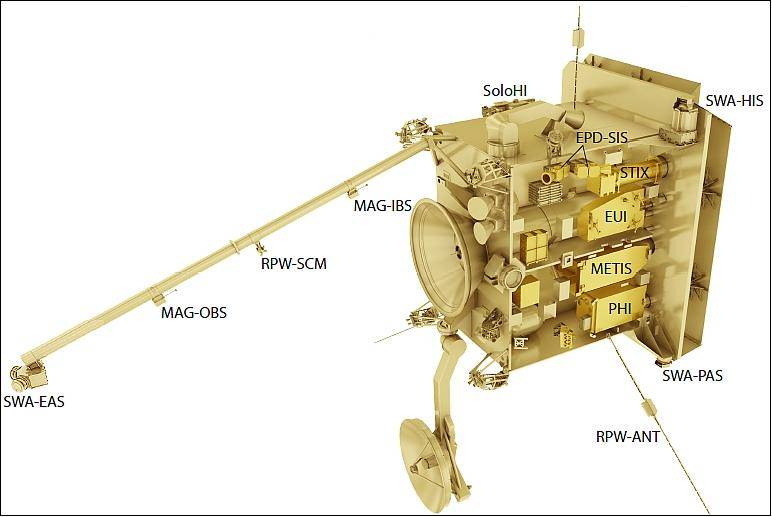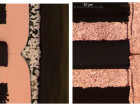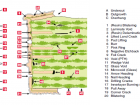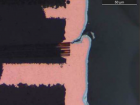Solar Orbiter
OBJECTIVE:
Solar Orbiter will be used to examine how the Sun creates and controls the heliosphere, the vast bubble of charged particles blown by the solar wind into the interstellar medium. The spacecraft will combine in situ and remote sensing observations to gain new information about the solar wind, the heliospheric magnetic field, solar energetic particles, transient interplanetary disturbances and the Sun’s magnetic field.
PARTNERSHIP
Joint mission between ESA and NASA.
Nine of the ten instruments on board will be provided by Europe, while NASA will provide the remaining instrument and a sensor.
The launch will be from Cape Canaveral aboard a NASA-provided launch vehicle.
Two of the most important challenges were:
Number of users. Solar Orbiter had 70 different users working for the 9 different instruments, in countries all over Europe. The management of the requirements of each instruments, promoting standardization and taking into account the Quality requirements of the program needed a thorough and detailed control, communicating with both Users and ESA constantly, as well as informing on Alter Technology progress through our WEB PROJECT OFFICE.
Evaluation of COTS components. Fully commercial components such as Diodes, Transistors, Capacitors or Microcircuits, as well as some Optoelectronic components have been submitted to full evaluation tests, following ECSS-Q-ST-60-13. Besides usual evaluations which include TID, DD, DPA, Life Tests, Temperature Cycles, Humidity Life, etc, vibration and shock evaluations could be performed in case of not usual packaged, as well as Outgassing then plastic was used on components. The use of COTS components usually not recommended on space programs, and only taking into account when specific performance needs cannot be fulfilled neither with qualified components nor with manufacturer support.
Lessons learnt in these points have been shared between ESA and Alter Technology, and they will surely be used on future Space Programs.
SPACECRAFT
As with all spacecraft, mass and volume are at a premium due to launch vehicle constraints; however, the Solar Orbiter main spacecraft body is further constrained due to the fact that a sizable portion of the budget is taken up by the heat-shield, along with the fact that the spacecraft must be optimized to fit behind the heat-shield with sufficient margin to cover off-pointing cases, e.g. due to spacecraft anomalies. The Solar Orbiter spacecraft main body is approximately 2 m3 (with stowed appendages). With 33 instrument units to accommodate on-board, the allowable volume of each instrument unit must be tightly controlled.
The Solar Orbiter spacecraft configuration is dominated by the presence of the heat shield located at the top of the spacecraft in order to protect the spacecraft from the intense direct solar flux when approaching perihelion. The heat shield is over-sized to provide the required protection to the spacecraft box and externally-mounted units, in combination with the attitude-enforcement function of the FDIR (Failure Detection, Isolation and Recovery). The mechanical platform revolves around a robust, reliable and conventional concept with a central cylinder, four shear walls and six external panels. This concept is inspired by Astrium’s Eurostar 3000 spacecraft platform. The design meets the Solar Orbiter’s mission requirements according to a low-risk and low-cost philosophy.
In April 2012, ESA awarded a contract to build its next-generation Sun explorer to Airbus DS (former Astrium UK, Stevenage). Astrium UK will lead a team of European companies who will supply various parts of the spacecraft.
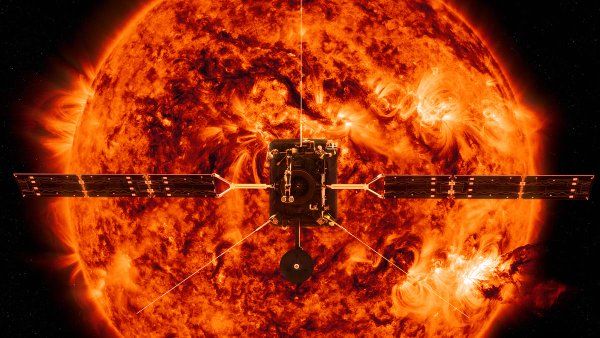
Alter Technology played a fundamental role by offering technical advisory support, minimizing the use of non-standard parts and by providing the necessary flexibility and expertise in test performance and evaluation of COTS parts.
https://wpo-altertechnology.com/cots-solar-orbiter-esccon/
|
Instrument |
Measurements |
| SWA: Solar Wind Plasma Analyser PI: C. Owen, Mullard Space Science Lab, UK |
ion and electron bulk properties (incl. density, velocity, and temperature) of the solar wind; ion composition for key elements of the solar wind |
| EPD: Energetic Particle Detector PI: J. Rodríguez-Pacheco, University of Alcala, Spain |
composition, timing and distribution functions of suprathermal and energetic particles |
| MAG: Magnetometer PI: T. Horbury, Imperial College, UK |
in situ measurements of the heliospheric magnetic field |
| RPW: Radio and Plasma Waves PI: M. Maksimovic, Observatoire de Paris, France |
magnetic and electric fields at high time resolution (in-situ and remote) |
| PHI: Polarimetric and Helioseismic Imager PI: S.K. Solanki, Max-Planck-Institut für Sonnensystemforschung, Germany |
full-disc photospheric vector magnetic field and line-of-sight (LOS) velocity as well as the continuum intensity in the visible wavelength range |
| EUI: Extreme Ultraviolet Imager PI: P. Rochus, Centre Spatial de Liège, Belgium |
simultaneous intermediate resolution full-disk and high-resolution partial-disk EUV image sequences of the solar atmospheric layers above the photosphere |
| SPICE: Spectral Imaging of the Coronal Environment Consortium Lead: A. Fludra, Rutherford Appleton Laboratory, UK |
EUV imaging spectroscopy of the corona |
| STIX: X-ray Spectrometer/Telescope PI: S. Krucker, FHNW, Switzerland |
imaging spectroscopy of solar thermal and non-thermal X-ray emission |
| METIS: Multi Element Telescope for Imaging and Spectroscopy (Coronagraph) PI: E. Antonucci, INAF- Astronomical Observatory of Turin, Italy |
visible (polarized and unpolarized), and UV imaging of the solar corona |
| SoloHI: Heliospheric Imager PI: R. A. Howard, NRL, USA |
visible sunlight scattered by solar wind electrons |
SCHEDULE
Solar Orbiter is due for launch in October 2018. It will reach its operational orbit three-and-a-half years after launch by using gravity assist manoeuvres (GAMs) at Earth and Venus. The nominal mission life time is approximately 7 years.
- Radiation Testing Services Electronics Parts - 5th July 2024
- COTS EEE parts in space applications: evolution overview. - 14th November 2016
- Solar Orbiter - 22nd February 2016


